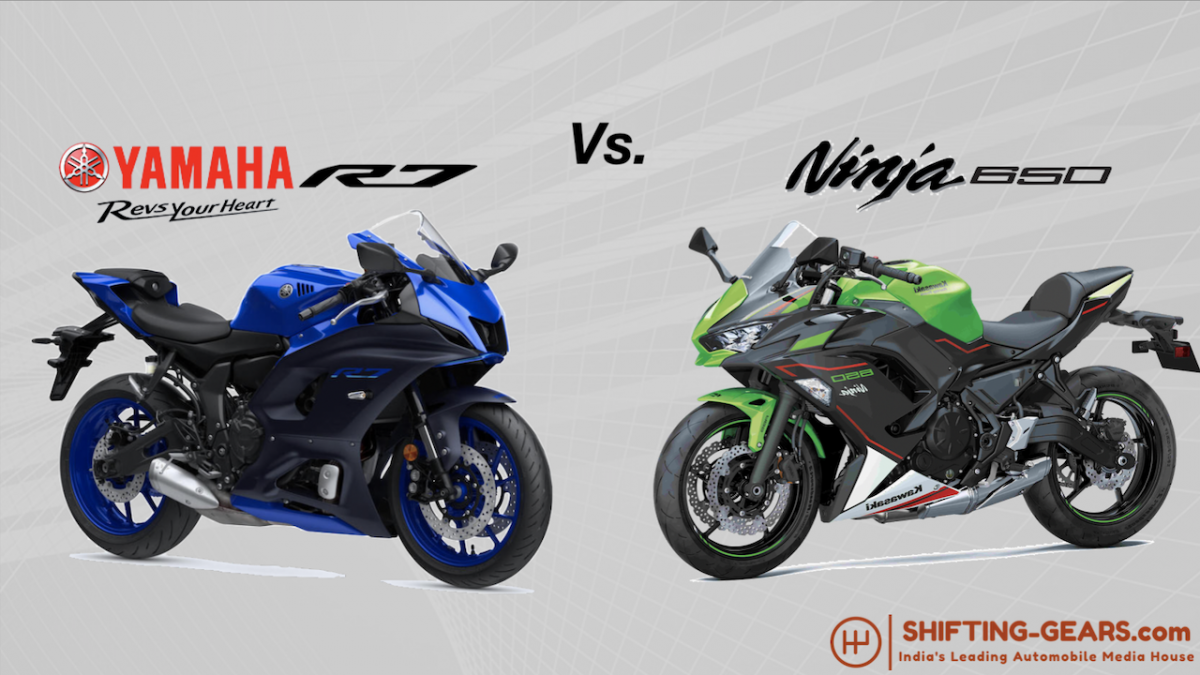

The middleweight motorcycle segment is slowly shifting from the earlier four-cylinder mainstream motorcycles towards twin-cylinder models. The trend shift started when Aprilia introduced its RS660 supersport and Tuono 660 sport naked motorcycles. The introduction of the lightweight, agile, affordable yet powerful twin-pots in conjunction with the suffocating new emission norms (Euro5/BS6) led to the demise of legendary motorcycles such as the Yamaha YZF-R6 and the Kawasaki Ninja ZX-6R.
Now Yamaha has introduced a new motorcycle, which seems to fill the void created by the discontinuation of the YZF-R6. The Yamaha R7 recently made its debut in the international market. The new supersport borrows some of its mechanical parts and the engine from the Yamaha MT-07, but it is not just an MT-07 with a supersport body. Yamaha has heavily re-engineered the chassis and added new parts to give the R7 its own identity.
But the CP2 motor is carried over from the MT-07/Tracer 700, and why not? After all, the engine is based on Yamaha’s Crossplane Concept and it is a worthy rival to Team Green’s Ninja 650. Kawasaki has also updated the much-popular Ninja 650 to BS6/Euro5 standards, and the motorcycle features the latest generation Ninja family design language, drawing inspiration from the Kawasaki Ninja ZX-6R.
But this article is not about which motorcycle looks better. Here we pin the latest kid on the block, the Yamaha R7, against the tried and tested 2021 Kawasaki Ninja 650 in a technical specification comparison.
The new Yamaha R7 features a CP2 series 689cc 270-degree twin-cylinder with liquid cooling. The engine comes with Yamaha’s Crossplane Concept crankshaft and produces 73.4 Hp of power and 67 Nm of torque. Yamaha also offers an A2 licence compatible version restricted to produce 35 kW power. The engine comes with a 6-speed gearbox and an Assist & Slipper clutch.
The Kawasaki Ninja 650 come with a 649cc parallel-twin cylinder engine with liquid cooling. The DOHC engine with electronic fuel injection and dual throttle valves producing 68 PS of power and 64 Nm of torque. The engine comes with a 6-speed return-type gearbox. The Ninja 650 also comes with an Assist & Slipper clutch similar to the Yamaha R7.
The Yamaha R7 features a bridge tube frame that rides on 41mm upside-down front forks with preload, rebound and compression adjustability. The rear suspension also features a preload and rebound adjustable link-type mono-cross shock absorber mounted on the same swingarm from the MT-07. The Kawasaki Ninja 650 comes with a high-tensile steel trellis frame that also rides on 41mm front forks. But the forks are the conventional type right-side-up hydraulic telescopic units. The rear comes with a preload-adjustable horizontal back-link suspension.
The Yamaha R7 gets 298mm dual discs on the front with radially mounted stoppers and a single 245mm hydraulic disc brake on the rear. The motorcycles come with dual-channel ABS. The Kawasaki Ninja 650 features 300mm dual semi-floating petal discs on the front and a single 220mm petal disc on the rear. The motorcycle also comes with a dual-channel ABS.
In the North American market, the Yamaha R7 will come with a starting price tag of USD 8,999. In the US, the Kawasaki Ninja 650 retails, starting at USD 7,999 for the ABS model and 7,599 for the Non-ABS version. Yamaha has not made any announcement if the brand will bring the R7 to the Indian market. But Kawasaki retails the Ninja 650 at the price tag of INR 6.54 lakh ex-showroom.